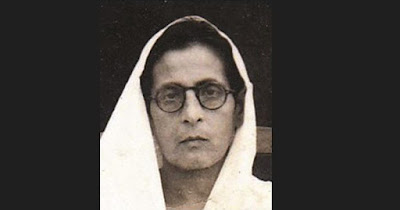Title:
Everything That Light Touches
Author:
Janice Pariat
Publisher:
HarperCollins India (2023)
Genre:
Literature, Nature
ISBN:
978-9356291393
Hardcover:
512 Pages
Buy
the book: Amazon
In
Janice Pariat's book, "Everything the Light Touches," she seamlessly
blends research with imagination across centuries. The narrative delves into
the lives of four individuals: Shai, Evelyn, Johann (Goethe), and Carl, whose
journeys are interconnected like the roots of an ancient Banyan tree.
In
her previous work, "Nine Chambered Heart," Pariat employed a unique
narrative technique, recounting the girl's story through various characters,
including teachers, lovers, and flatmates. In "Everything the Light
Touches," she continues with this approach, using multiple perspectives,
to enrich the narrative.
The
central character of the story is Shai, a woman in her thirties. The book
begins with Shai's journey as she prepares to fly from Delhi airport to her hometown,
Meghalaya—a place seemingly forgotten by its own country. ‘We land in a
place that falls off the map. So far east in this vast country that it feels
not of this country anymore.’
While
each of us must eventually return to our origins, Shai is concerned about her
family and community.
Pariat
in an interview: We live in a world of very unequal stories, where someone like
Karl Linnaeus will be known but somebody from a small little corner of India's
northeast, who might have the same amazingly profound ideas about our
relationship to the natural world, will quite easily be dismissed. It was very
important for me to place these stories also on the same plane, so that Goethe
and Linnaeus exist amidst all of these other characters who are equally valid,
equally important.
Pariat
excels at crafting multi-dimensional characters, and it's the small details
that breathe life into her work. For instance, when Shai reunites with her
mother, Pariat vividly describes the encounter, ‘it’s been less than a
year since I’ve seen her—in which secret hours did she age? When I hug her,
though, she smells familiar, of wool and naphthalene and hand cream…’
The
narrative then shifts to Evelyn, deeply passionate about botany, and less
interested in conventional life. Frustrated by the lack of academic
opportunities in England, she embarks on a journey to India, to explore the
Himalayan flora and fauna.
One
of the most innovative chapters belongs to Carl. Pariat fearlessly experiments
with storytelling in this section, incorporating approximately 40 micro-poems
that are both lyrical and comforting. These poems range from one-liners to free
verses, with "How to Hunt a Bear" consisting of just three
words: "Do not miss."
SIGNS
The
peasants who reside near the cliffs or rising ground judge by the crows the
approach
of
bad weather; for these birds seek the marshy country before it comes on.
They
say they have been reading such signs for years.
Here,
I am borrowing the words of Nilanjana Roy: Everything the Light Touches is
a magnificent reminder that the natural world does not lie outside of
ourselves, and that when we break trust with the earth, we break our own
spirits into scattered fragments. Janice Pariat finds a new language of
connection, wonder, and loss, for the songs of the earth from Lapland and
Goethe's Europe to the Lower Himalayas and remote villages in India's
Northeast, her stories dancing between centuries in this generous and intricate
work.
As Henry Miller said, "One's destination is never a place, but a new way of seeing things."
Janice Pariat's "Everything the Light
Touches" is not just a book but a grand narrative that delves into the
essence of existence, human bonds spanning ages, botanical wonders, poetic
beauty, and profound discoveries. It has earned a place on the longlist of the
JCB Prize for Literature in 2023.
About the Author
Janice
Pariat is the author of Boats on Land: A Collection of Short Stories, Seahorse:
A Novel, and the international bestseller The Nine-Chambered Heart. She was the
recipient of the Young Writer Award from the Sahitya Akademi and the Crossword
Book Award for Fiction in 2013. Janice's work has been translated into ten
languages. She teaches at Ashoka University, and lives between New Delhi and
Shillong with a cat of many names.
This post is powered by Blogchatter Review Program.

















